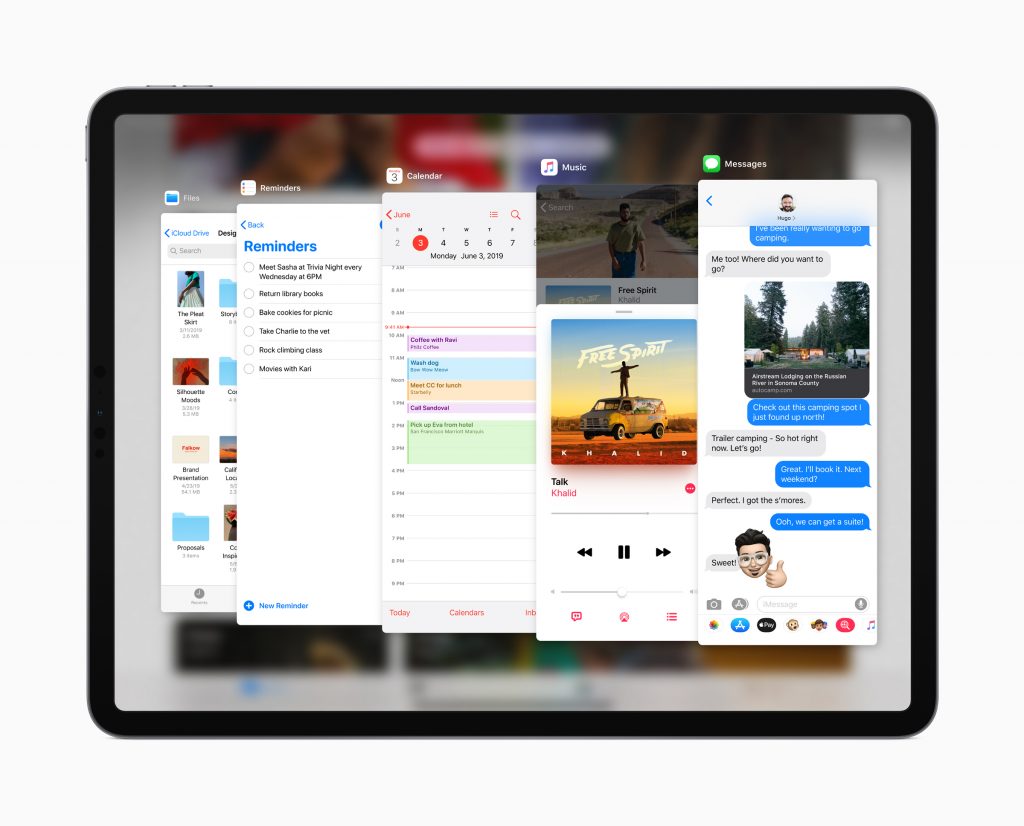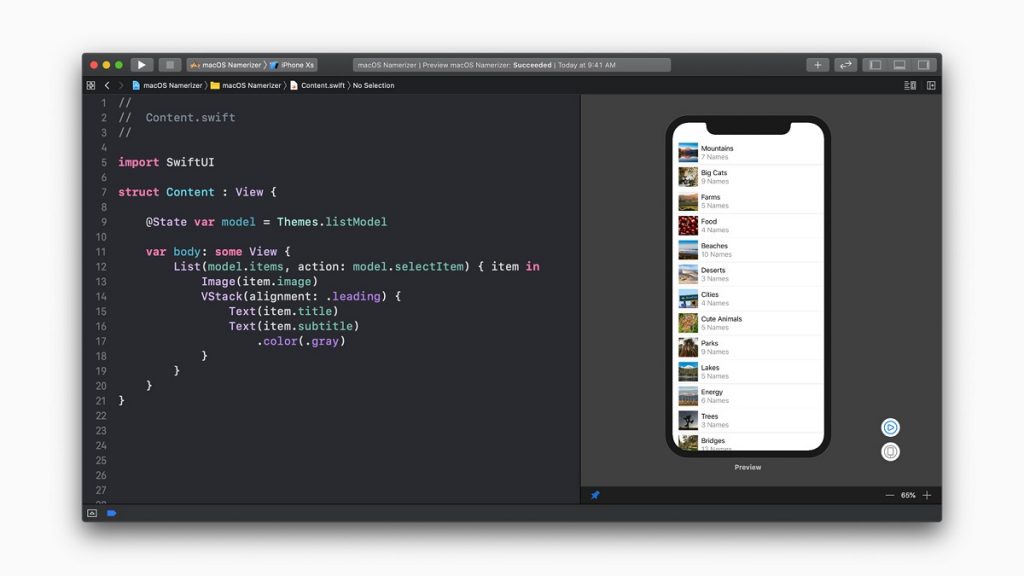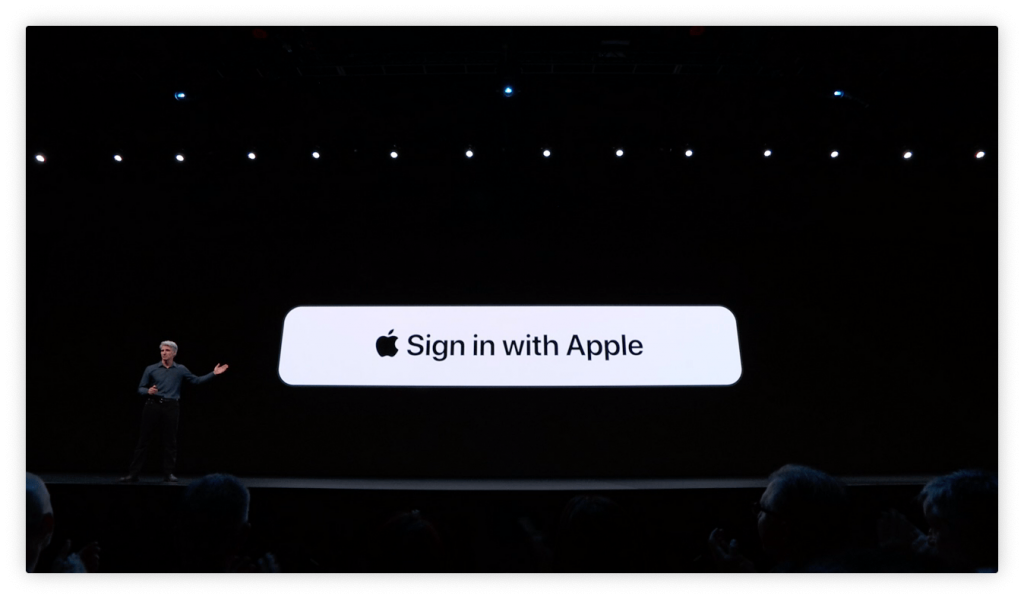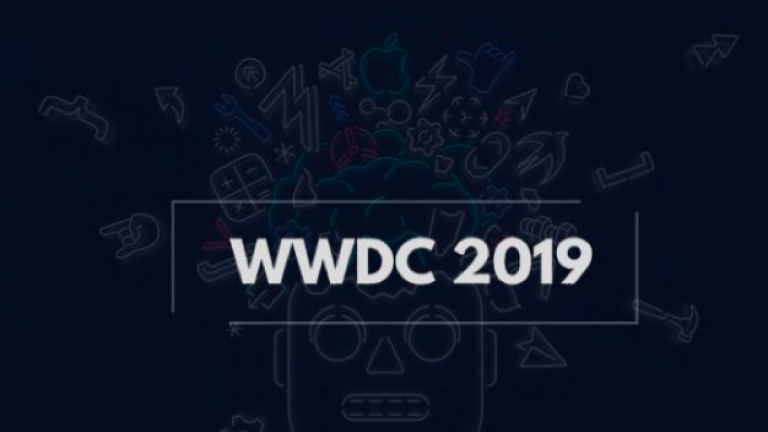Apple announced a slew of software updates for the Apple family of devices, including the iPhone, iPad, Mac desktops and laptops, Apple TV, and Apple Watch at the WWDC Keynote on June 3, 2019.
Let’s take a look at some of the highlights of the announcements:
iPadOS
A surprise announcement (missed by the tech news portals prior to the event too) was the announcement of a new OS, exclusively for the iPad With their larger screens, Apple is pushing the boundaries on what you can do on an iPad. With the functionality gap widening between iPhones and iPads, Apple decided to split iOS and give iPad its own dedicated OS called iPadOS. iPadOS is built upon iOS but provides additional capabilities to build experiences that are unique to the iPad. I’m guessing you can still run your iOS apps on iPad but if you want your app to take advantage of the unique interactions of an iPad, you’ll have to create an iPadOS app development.

Image Source
Some of the features include:
- Side by side apps, expose, file column views for more productivity
- File sharing – iCloud drive folder sharing
- You can plug in thumb drives, SD cards, external drives, import photos from your camera
- Desktop class browsing on Safari iPad (desktop site instead of mobile site)
- Downloads manager
- Font customization
- Use and buy custom fonts
- Improvements for text editing using Multi-touch
- Lower latency from 20ms to 9ms
- Redesigned Pencil tools
- PencilKit API
It seems like they’re really focused on making it a productivity machine rather than a casual device to consume content on (which I feel was the main focus of the iPad when it first came out). The emphasis is on multi-tasking, multi-touch gestures and an all-new home screen with an ability to pin widgets. Some of the features showcased (pen drive compatibility, column view of files, sharing of folders) make it amply clear that the intent is to keep working towards it being a replacement for laptops.
SwiftUI

Image Source
SwiftUI is a new Apple framework that will allow you to create user interfaces with code. You can build UIs across iOS, iPadOS, macOS, watchOS and tvOS apps and it also comes with out of the box functionality for interface layout, Dark Mode, Accessibility, right-to-left language support and internationalization. Xcode 11 has a new way to design UIs without having to write any code. I will be downloading the Xcode 11 beta to check this out.
RealityKit
I haven’t spent much time playing around with ARKit myself but I’m still surprised by how cool these experiences are each time I see them. I was really impressed by the new RealityKit announced at WWDC that will allow you to create interactive AR experiences from a library of 3D objects and models. This drag and drop RealityComposer will allow people to create AR scenes even if they don’t have an extensive background in 3D graphics or 3D modelling.
ARKit 3
Two improvements they’ve made to this latest version of ARKit is around People Occlusion and Motion Capture.In the first demo, Apple showed people walking around in front of and behind of objects without messing up the order that they appear in. There’s some sort of automatic depth detection going on so ARKit knows the show the object behind or in front of the person.
In the second demo, Apple showed that you can perform motion capture on a person without any special equipment. Just point and record!
WatchOS
The Apple Watch has come a long way since the Series 1 when it was a companion device to the iPhone. Later it can be a stand alone device too with SIM support. With the next version of WatchOS, you can build apps specifically for the Apple Watch without the need for a companion iOS app. There are also new watch faces, cool new APIs for things like streaming audio or to allow your app to run for an extended amount of time. The Apple Watch also gets its own App Store. Apple also showcased health capabilities with activity trends, hearing health, cycle tracking (available on the Health app on iPhone too) and a redesigned health app dashboard (using ML for determining which metrics to show you).
tvOS
The tvOS app gets design enhancements, ability to add multiple user profiles, in-sync lyrics and more. You can now use Xbox and PS4 controllers with the new tvOS.
iOS 13
Announcements pertaining to iOS were expected to be the highlight of the Keynote. A few tech blogs had already highlighted features like system-wide dark mode, new designs for Apple’s own apps etc. For me, the emphasis of iOS 13 was on improving performance. Here are a few examples:
- Face ID unlocks 30% faster
- App downloads are 50% smaller, app updates are 60% smaller
- Up to 2x faster app launch speed
Aside from the above, dark mode was showcased. It gives a whole new playground for designers to think through the visual experience of their apps.
Apple has always offered privacy as a key differentiating factor relative to competition. In a significant move, they announced “Sign in with Apple” as an option to social logins. This option also has an ability to mask one’s emails ID when having to share it with other services or apps. With the ‘hide my email’ option the app would only see a randomly generated anonymous email address – an announcement which got a lot of applause from the crowd.

Image Source
As an extension of the privacy initiatives, Apple announced new features and hardware for HomeKit, its framework for smart home devices. On display yesterday was HomeKit Secure Video, which analyzes videos from smart security cameras locally before encrypting and uploading them to iCloud. HomeKit enabled 3rd party routers were also announced which have firewall safeguards for connected accessories.
MacOS
There has been a lot of buzz about Project Marzipan months ahead of this WWDC. Turns out it is actually Project Catalyst which helps developers bring iOS apps to the Mac. It will be made available in the next version of macOS – named Catalina. Another interesting announcement was Sidecar which enables an iPad to be used as an external device.
Other notable announcements include Siri’s ability to read messages which you can respond via voice and it works with any app using SiriKit.
Here’s a 13-minute round up of the key announcements:
All in all, it was a feature packed Keynote with several interesting implications for the developer ecosystem. Over the next one week, Apple will reveal more on these features through the hands-on workshops and lectures at the WWDC. The impact of these features will be revealed in the months to come through exciting solutions in the app world.





